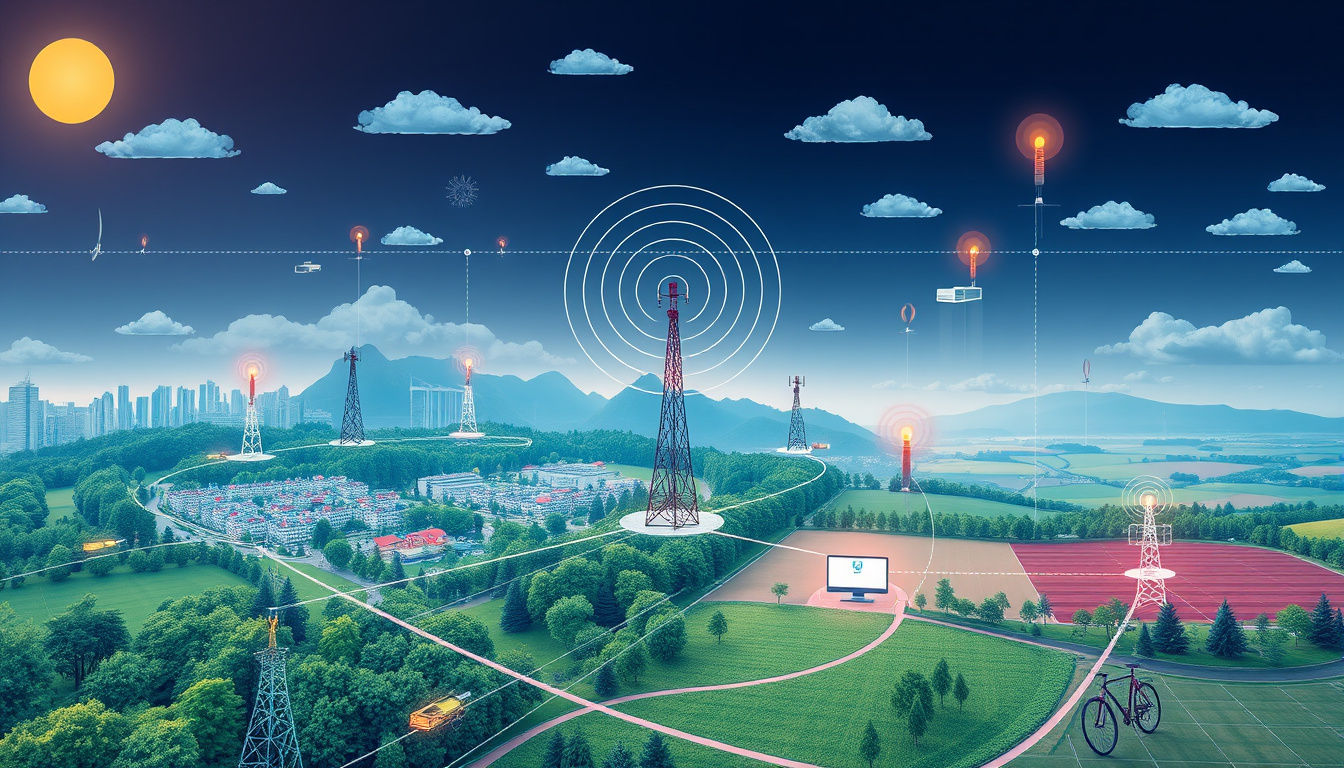Signal propagation is the fundamental process that governs how electromagnetic waves travel from a transmitter to a receiver, playing a critical role in various communication technologies, including wireless networks, radio transmissions, and cellular systems. Understanding this phenomenon is essential for optimizing communication systems across numerous applications, from emergency services to smart cities.
What is Signal Propagation?
At its core, signal propagation refers to the movement of electromagnetic waves through different media. This process can be impacted by various environmental factors such as obstacles and atmospheric conditions, similar to how light interacts with surfaces. As the signal travels, phenomena like reflection, diffraction, absorption, and scattering come into play, altering its strength and clarity.
Types of Media Affecting Signal Propagation
- Free Space: Signals can travel freely but are subject to interruptions caused by physical barriers like buildings or trees.
- Cables: Wired media provide a controlled environment for signal flow, minimizing external influences.
- Fiber Optics: These reduce signal loss and allow faster transmission speeds, primarily utilized in data communications.
Each medium has distinct properties which affect how signals behave, such as distance and environmental obstacles, fundamentally shaping the communications landscape.
Key Factors Influencing Signal Propagation
Several intrinsic and extrinsic factors dictate the efficiency of signal propagation, impacting everything from radio range to cellular connectivity:
-
Reflection: Signals can bounce off obstacles, leading to constructive or destructive interference. In urban areas, reflected signals can cause dead zones where communication falters.
-
Diffraction: This allows signals to bend around physical obstacles, making it possible to maintain communication even when the line of sight is obstructed.
-
Absorption: Materials like concrete or foliage can absorb signal energy, weakening it significantly, particularly in indoor contexts where walls constitute barriers.
-
Scattering: Small particles in the atmosphere (e.g., raindrops or dust) can disrupt signal integrity by breaking it into smaller components, often resulting in static or reduced clarity in communications.
-
Path Loss: As signals travel greater distances, they naturally lose strength, which can limit their effective range.

Types of Signal Propagation in Wireless Communication
Understanding the different propagation methods is essential for designing effective communication systems:
-
Line-of-Sight (LOS): This ideal scenario occurs when there is a direct path between transmitter and receiver, ensuring no barriers obstruct the signal. It is best utilized in open environments.
-
Ground Wave Propagation: Signals that travel by following the Earth’s curvature are well-suited for medium-range transmissions, commonly applied in rural communications.
-
Sky Wave Propagation: Used primarily in emergency services, this technique allows signals to reflect off the ionosphere, facilitating long-distance coverage.
-
Tropospheric Propagation: This method bounces signals within the atmosphere, extending their reach beyond what ground waves can usually cover.
Applications of Signal Propagation
The implications of signal propagation are vast and diverse, spanning various sectors:
-
Emergency Services: Reliable communication is crucial for the rapid response of emergency services. Understanding propagation helps ensure that radios function optimally even in challenging environments with numerous obstacles.
-
Wireless Sensor Networks: In applications like smart cities and health monitoring, understanding how signals propagate through different materials (like the human body) can optimize sensor placement and performance.
-
Telecommunications: Knowledge of propagation helps in the planning and deployment of networks, ensuring coverage even in complex terrains or urban developments.
Conclusion
The science of signal propagation underpins much of modern communication. By comprehending how signals traverse different media and are affected by environmental factors, engineers and scientists can devise more robust and effective communication systems. As technology progresses, continuously enhancing our understanding of these principles will remain vital in addressing the challenges posed by increasingly complex environments and applications in our interconnected world.



